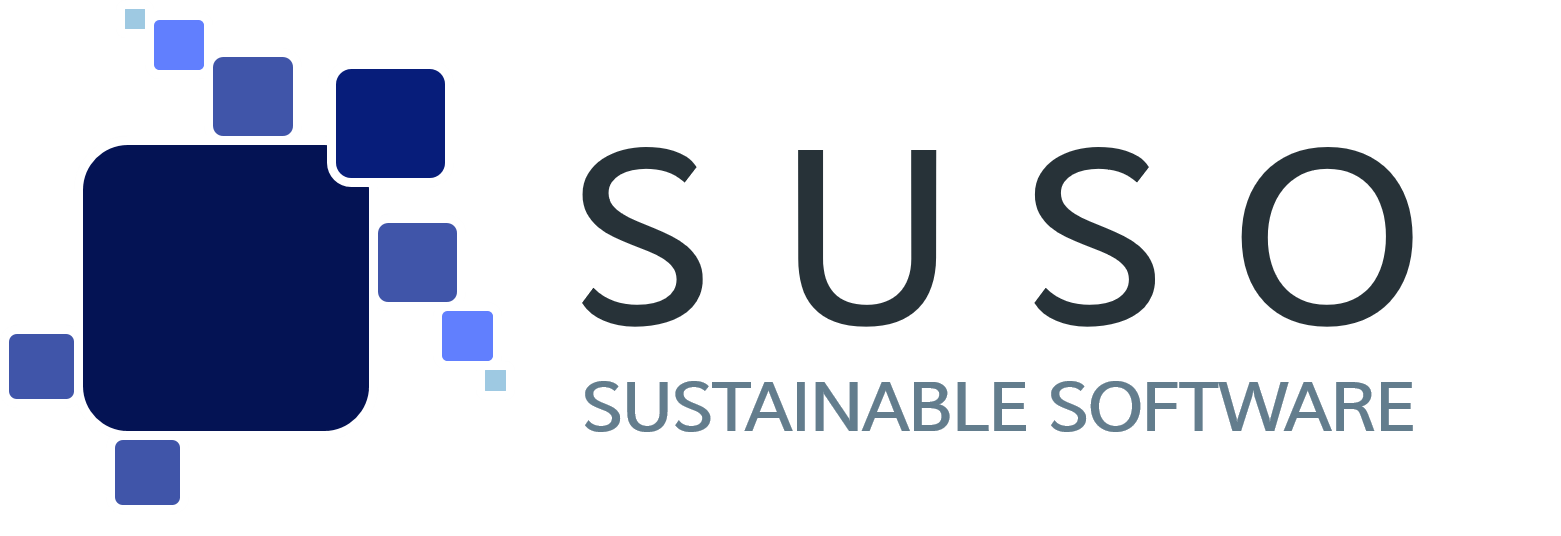Green Coding: The 5 most important basics for sustainable software development with code examples
In times of climate change and increasing environmental pollution, it is more important than ever that we reduce our ecological footprint and live more sustainably. This also applies to software development, which usually consumes a lot of energy and resources. Green coding is a method that aims to reduce the energy consumption and resource usage of software, making it more sustainable.
In this article, we would like to introduce the basics of Green Coding and show why it is important for software companies to address the issue. The target audience of this article are software companies and developers who are interested in sustainable software development and want to expand their knowledge in this area.
By applying green coding, software companies can not only contribute to environmental protection, but also reduce their energy costs and strengthen their reputation as an environmentally conscious organization. In the following sections, we will present five examples of Green Coding and use code examples to illustrate how sustainability and efficiency can be combined in software development.
Green Coding Basics
To help you make software more sustainable and efficient, there are some basic principles that should be considered during development. These principles include optimizing algorithms and data structures, using energy-efficient hardware, optimizing power consumption, managing memory efficiently, and reducing network traffic. In the following section, we will elaborate on these five key basics of Green Coding and use code examples to illustrate how they can be implemented in practice.
To illustrate the basics of Green Coding, we will present concrete code examples below in which we implement the principles of sustainable software development.
Use our tools for sustainable software
Example 1: Efficient algorithms and data structures
This example is about writing a function that counts the occurrences of an element in an array. A simple solution is to traverse the array and check each element. However, this linear search has a time complexity of O(n), which means that the search grows in proportion to the number of elements in the array.
A more efficient solution is to use a hash table that has a constant time complexity of O(1). The hash table stores each element of the array as a key and the number of its occurrences as a value. The function then simply counts the number of the element it is looking for in the hash table.
Here is the code for the function with the linear search:
def count_elements_linear(arr, element):
count = 0
for i in range(len(arr)):
if arr[i] == element:
count += 1
return countAnd here is the code for the function with the hash table:
def count_elements_hash_table(arr, element):
count_table = {}
for i in range(len(arr)):
if arr[i] in count_table:
count_table[arr[i]] += 1
else:
count_table[arr[i]] = 1
if element in count_table:
return count_table[element]
else:
return 0Green-Coding Example 2: Energy-efficient hardware usage in the calculation of Fibonacci numbers
Then, we have energy efficiency of hardware usage. All program code is executed by a physical computer that consumes energy. The choice of hardware and the way the code is executed can have a significant impact on energy consumption.
One way to improve energy efficiency is to put as little load on the computer’s processor as possible. If the processor is constantly running at full speed, it will consume more energy. There are several ways to lighten the load on the processor, such as using pause or sleep modes when running code.
Another important factor is the choice of hardware. There are specific processors and graphics cards that are known for their energy efficiency. Therefore, when choosing hardware, developers should make sure that it consumes as little energy as possible while still providing sufficient performance.
The Fibonacci sequence is a popular mathematical sequence that is often used as an example of recursive functions. However, a simple recursive implementation of the Fibonacci function has a high time complexity and can therefore be very computationally intensive.
One way to make the computation of Fibonacci numbers more energy efficient is to use memoization. Memoization means that results of functions are cached to avoid unnecessary computations.
Recursive Fibonacci function without memoization:
def fibonacci_recursive(n):
if n < 2:
return n
return fibonacci_recursive(n-1) + fibonacci_recursive(n-2)For the Fibonacci function with memoization:
def fibonacci_memoization(n, memo):
if n in memo:
return memo[n]
if n < 2:
memo[n] = n
else:
memo[n] = fibonacci_memoization(n-1, memo) + fibonacci_memoization(n-2, memo)
return memo[n]
def fibonacci(n):
memo = {}
return fibonacci_memoization(n, memo)
As can be seen, the fibonacci_memoization function stores the results in a memo dictionary to avoid unnecessary calculations. By using memoization, the number of computations is reduced, resulting in improved energy efficiency.
By optimizing hardware usage and using energy-efficient algorithms and data structures, developers can reduce the energy consumption of their software and thus contribute to sustainability.
Green Coding Example 3: Efficient Data Processing with List Comprehension
Another important aspect of green coding is the efficient processing of data. Large amounts of data can be very computationally intensive and thus cause high energy consumption. Energy consumption can be reduced by using efficient data structures and algorithms.
One way to optimize data processing is to minimize the number of loop passes required. Loops are usually very computationally intensive because they can perform a large number of calculations.
Another approach is to use parallelization. Many modern computers have multiple cores that can operate simultaneously. By dividing tasks among multiple cores, computing power can be used more efficiently.
In Python, there is an efficient way to minimize loops: List Comprehension. List Comprehension is a short syntax to create lists from other lists without having to use loops.
An example that calculates the square numbers from 0 to 9, initially without List Comprehension:
squares = []
for i in range(10):
squares.append(i**2)Here we see the code with List Comprehension:
squares = [i**2 for i in range(10)]As you can see, the List Comprehension variant is shorter and faster than the loop variant. By using List Comprehension, developers can reduce the number of loop passes and thus reduce energy consumption.
By processing data efficiently, developers can reduce the energy consumption of their software and thus contribute to sustainability.
Green coding example 4: Resource-saving design through the use of caching
Now, we have resource-efficient design. This means that developers should take care to use resources such as CPU, memory and network bandwidth as efficiently as possible when designing software.
An example of resource-efficient design is the use of caching. Caching is a technique of holding frequently used data in memory to speed up access to that data. Using caching can reduce network bandwidth and CPU power requirements.
Another approach to resource-efficient design is the use of lazy loading. Lazy loading is a technique where data is loaded only when it is needed. By using lazy loading, developers can reduce the memory footprint of their software because data that is not needed is not held in memory.
The following is an example of how to use caching in Python to reduce network bandwidth requirements:
import requests
from functools import lru_cache
@lru_cache(maxsize=128)
def get_data_from_api(query):
response = requests.get("https://api.example.com/data", params={"q": query})
return response.json()
# Verwendung des Cache
data1 = get_data_from_api("apple")
data2 = get_data_from_api("banana")
data3 = get_data_from_api("apple")In this example, the lru_cache function from the functools module is used to reduce network access. The get_data_from_api function retrieves data from an API and caches it. When the same data is needed again later, it is loaded from the cache instead of being retrieved over the network again. This reduces network bandwidth requirements and improves application response time.
Through resource-efficient design, developers can reduce the resource requirements of their software and thus contribute to sustainability.
Green coding example 5: Energy-efficient implementation, use of sleep statements
Finally, implementing energy-efficient code is another important aspect of green coding. This involves optimizing the way code is executed to reduce energy consumption.
One example of energy-efficient implementation is the use of sleep statements. Sleep statements are pauses in the code that cause the processor to enter a sleep state for a certain amount of time. This can reduce the power consumption of the processor.
Another example is the use of asynchronous code. Asynchronous code executes multiple tasks simultaneously without the processor having to wait for the result of a single task. This can reduce the processor’s energy consumption because it does not have to wait unnecessarily for tasks to finish.
The following is an example of how to use sleep statements in Python to reduce power consumption:
import time
def process_data(data):
# Verarbeitung der Daten
time.sleep(1) # 1 Sekunde Pause
data1 = [1, 2, 3, 4, 5]
data2 = [6, 7, 8, 9, 10]
for d in data1:
process_data(d)
for d in data2:
process_data(d)In this example, the time.sleep function is used to give the processor a pause of 1 second before it continues processing the next data. This reduces the energy consumption of the processor.
Through energy-efficient implementation, developers can reduce the energy consumption of their software and thus contribute to sustainability.
More tips and tricks from Green Coding
In addition to the five basics of Green Coding, there are other best practices and advice for developing energy efficient and sustainable software. Some tips and tricks are presented below:
- Avoiding unnecessary calculations: Every calculation that is unnecessary consumes additional energy. Therefore, it is important to optimize the code to avoid unnecessary calculations.
- Leveraging reuse practices: Code reuse can help shorten development time and reduce energy consumption by reducing the amount of code that needs to be written.
- Use energy-efficient libraries and frameworks: There are many libraries and frameworks designed specifically for energy-efficient development. By using these tools, developers can improve the energy efficiency of their software.
- Reduce power consumption during the debugging process: The debugging process can consume a lot of power, especially when performed on a physical device. One way to reduce power consumption is to use emulators and virtualization technologies.
By applying these additional tips and tricks, developers can make their software even more energy efficient and sustainable.
Conclusion
Green Coding is an important aspect of sustainable software development that is becoming increasingly relevant in today’s world. By applying energy-efficient methods and techniques, software developers can help to reduce the energy consumption and environmental impact of their software. It is important that software companies become aware of this responsibility and integrate energy-efficient methods into their development processes.
By the way: To supplement this, also read our other article on the topic of green coding.





